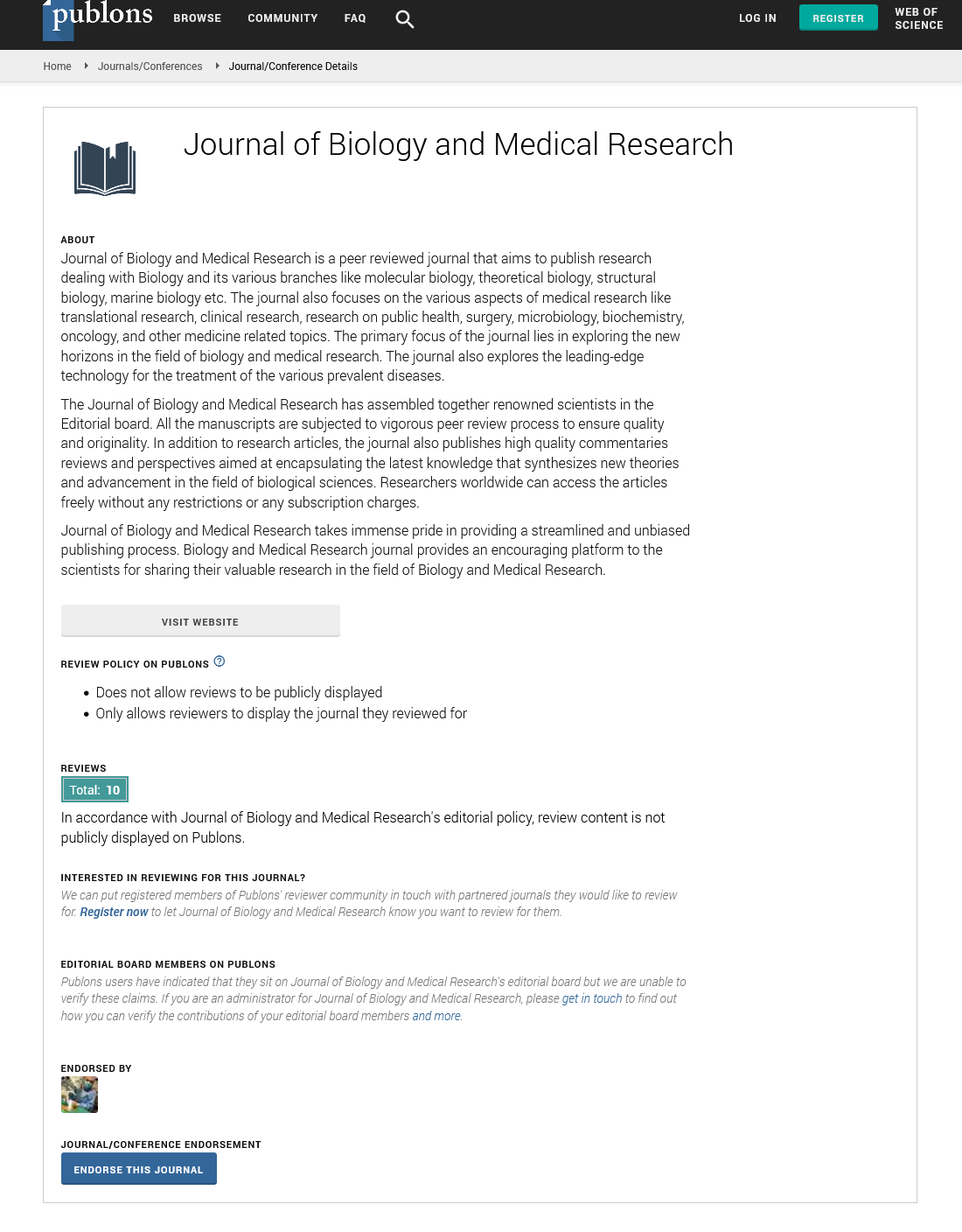Abstract
Insecticidal Poisoning in Human Visceral Organs
Background: The use of pesticides and insecticides has brought Green Revolution. Yet, the pollution of soil, water and air caused by these chemicals make so many disorders in human body. They get accumulated in certain tissues of human visceral organs and may lead to slow poisoning. Poverty or emotional unbalance stimulates suicidal tendency in people, who misuse these poisonous chemicals. In a quest to find some method to analyze the presence of these toxins in body tissues the present work was undertaken. A poison can gain entrance into the human system by inhalation, ingestion, injection, introduction into body cavities or by application over body surfaces. The poison undergoes metabolic changes and may be detoxified. Under these conditions, the amount of poison remaining in the body becomes too small and sometimes it is available in traces.
Methodology: The tissues and organs, in which the poison is suspected to be present, should be preserved for chemical analysis. The steps to identify a poison in biological tissues involve separation of the poison from the tissues, its isolation into a characteristic group, detection and identification by Thin Layer Chromatography. Some adsorbents like silica gel and alumina are supported as thin layers on glass plates called chromate plates. In this technique, we have a wider choice of the media. So, we can separate the compounds by means of partition, adsorption and ion exchange. Cases of Organo Phosphorus poisoning are taken up for the study. The methodology for analyzing the poison includes visual study, odor test, Reinsch test to detect the presence of metals as poisons, test for rodenticide, tests for cyanide, nitrite and nitrate.
Results and Discussion: The analysis for the organo phosphorus insecticide includes solvent extraction, filtration, concentration and analytical detection by Thin Layer Chromatography. Based on the experiments conducted, it has been found that the cases of organo phosphorus poisoning are increasing day by day.
Conclusion: Many people consider that taking life off either a human being or an animal by blood-shed is a greater sin. This belief has led to the use of poisonous insecticides which has led to complete putrefaction and sepsis of internal organs of the victim’s bodies.
Author(s): Kishore Balasubramanian an Ramya K
Abstract | Full-Text | PDF
Share This Article
Google Scholar citation report
Citations : 80
Journal of Biology and Medical Research received 80 citations as per Google Scholar report
Journal of Biology and Medical Research peer review process verified at publons
Abstracted/Indexed in
- Google Scholar
- Publons
Open Access Journals
- Aquaculture & Veterinary Science
- Chemistry & Chemical Sciences
- Clinical Sciences
- Engineering
- General Science
- Genetics & Molecular Biology
- Health Care & Nursing
- Immunology & Microbiology
- Materials Science
- Mathematics & Physics
- Medical Sciences
- Neurology & Psychiatry
- Oncology & Cancer Science
- Pharmaceutical Sciences
